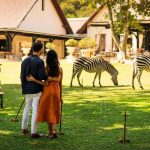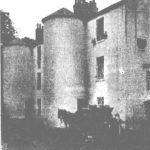Livingstone, Zambia, is more than just a city; it’s a vibrant mosaic of cultures, histories, and natural wonders. As the gateway to the world-renowned Victoria Falls, Livingstone has long been a hub for explorers, adventurers, and those seeking to experience the true essence of Africa. In 2013, as part of the David Livingstone Bicentenary and Livingstone 2013 initiative, the city embraced this rich heritage by celebrating its diversity in a way that resonated with locals and visitors alike.

Livingstone’s diversity is woven into the fabric of its daily life. The city is home to a variety of ethnic groups, each contributing to the rich cultural tapestry that defines the area. This cultural diversity is reflected in the arts, music, dance, and traditions that make Livingstone unique. The celebrations in 2013 highlighted this diversity through a series of events that brought together people from different backgrounds to share and celebrate their heritage.
One of the standout events was the Livingstone International Cultural Arts Festival, where the city became a stage for performances from various cultural groups, both local and international. The festival showcased traditional dances, music, and art from Zambia and its neighboring countries, creating a vibrant atmosphere that celebrated the shared histories and cultural connections of the region. It was a time when Livingstone’s streets pulsed with rhythm, color, and the energy of diverse cultures coming together.

In addition to the festival, the David Livingstone Bicentenary initiative also emphasized educational and cultural exchanges. Schools and universities from the UK and Zambia participated in exchange programs that allowed students to learn about each other’s cultures, fostering a deeper understanding and appreciation of diversity. These exchanges were not only educational but also helped to build lasting friendships and partnerships that continue to benefit both communities.
Livingstone’s diversity was also celebrated through various exhibitions and art projects that highlighted the city’s history and its role as a cultural crossroads. The Bird Exchange Exhibition, for example, brought together schoolchildren from Zambia to create art, stories, and music that reflected their experiences and the beauty of their diverse backgrounds. These projects provided a platform for young people to express their identities and connect with others, further enriching the cultural landscape of Livingstone.

The celebrations of 2013 were not just about looking back at Livingstone’s past; they were also about building a future that honors and continues this legacy of diversity. By embracing its multifaceted identity, Livingstone has positioned itself as a city that values inclusivity, cultural exchange, and the preservation of its rich heritage.
As Livingstone continues to grow and evolve, the spirit of the 2013 celebrations lives on, reminding us of the importance of diversity in building strong, vibrant communities. Whether through cultural festivals, educational exchanges, or everyday interactions, Livingstone remains a testament to the beauty and strength that comes from embracing diversity.
Recent Comments